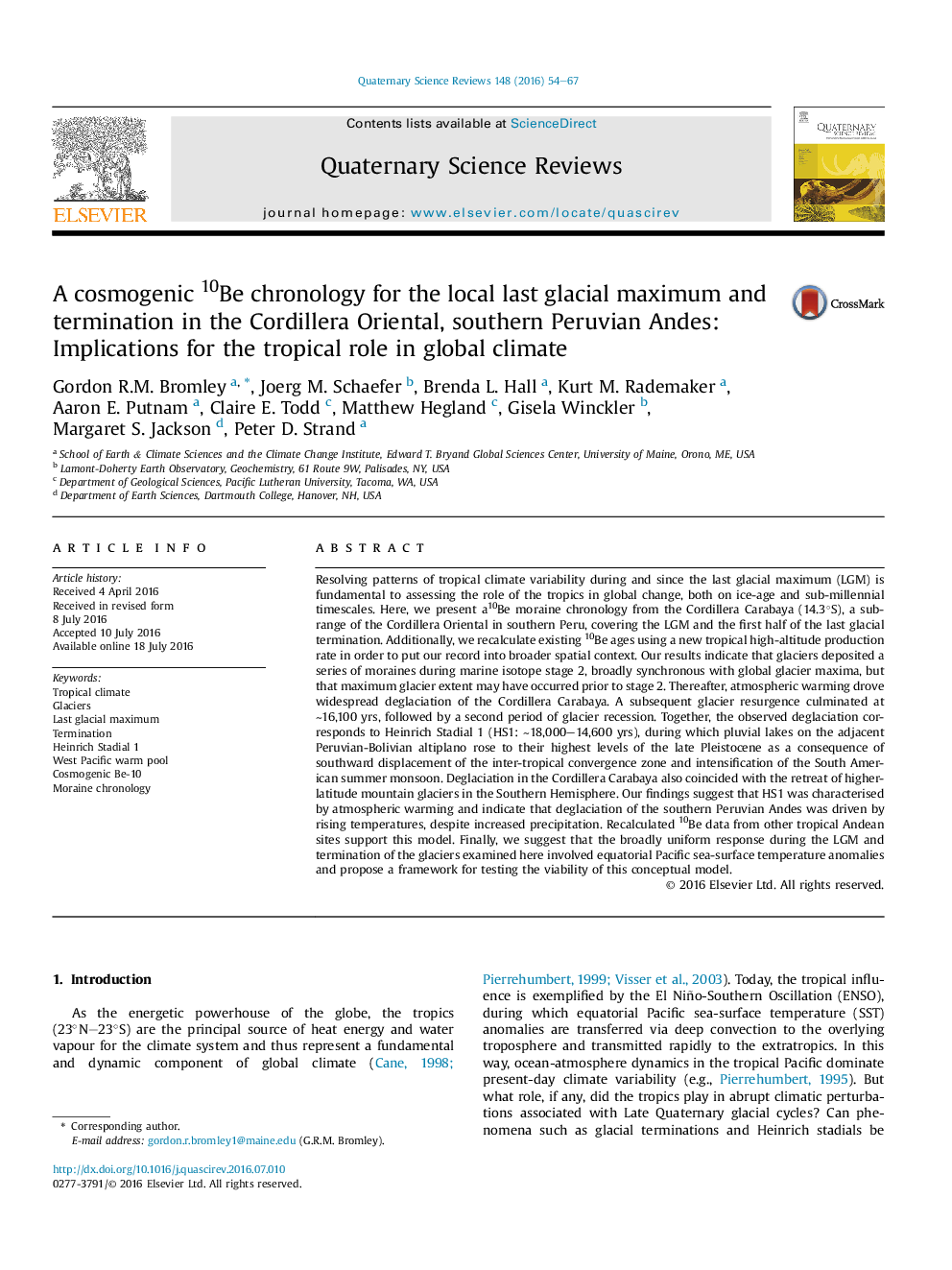| کد مقاله | کد نشریه | سال انتشار | مقاله انگلیسی | نسخه تمام متن |
|---|---|---|---|---|
| 6445370 | 1640787 | 2016 | 14 صفحه PDF | دانلود رایگان |
عنوان انگلیسی مقاله ISI
A cosmogenic 10Be chronology for the local last glacial maximum and termination in the Cordillera Oriental, southern Peruvian Andes: Implications for the tropical role in global climate
دانلود مقاله + سفارش ترجمه
دانلود مقاله ISI انگلیسی
رایگان برای ایرانیان
کلمات کلیدی
موضوعات مرتبط
مهندسی و علوم پایه
علوم زمین و سیارات
زمین شناسی
پیش نمایش صفحه اول مقاله

چکیده انگلیسی
Resolving patterns of tropical climate variability during and since the last glacial maximum (LGM) is fundamental to assessing the role of the tropics in global change, both on ice-age and sub-millennial timescales. Here, we present a10Be moraine chronology from the Cordillera Carabaya (14.3°S), a sub-range of the Cordillera Oriental in southern Peru, covering the LGM and the first half of the last glacial termination. Additionally, we recalculate existing 10Be ages using a new tropical high-altitude production rate in order to put our record into broader spatial context. Our results indicate that glaciers deposited a series of moraines during marine isotope stage 2, broadly synchronous with global glacier maxima, but that maximum glacier extent may have occurred prior to stage 2. Thereafter, atmospheric warming drove widespread deglaciation of the Cordillera Carabaya. A subsequent glacier resurgence culminated at â¼16,100 yrs, followed by a second period of glacier recession. Together, the observed deglaciation corresponds to Heinrich Stadial 1 (HS1: â¼18,000-14,600 yrs), during which pluvial lakes on the adjacent Peruvian-Bolivian altiplano rose to their highest levels of the late Pleistocene as a consequence of southward displacement of the inter-tropical convergence zone and intensification of the South American summer monsoon. Deglaciation in the Cordillera Carabaya also coincided with the retreat of higher-latitude mountain glaciers in the Southern Hemisphere. Our findings suggest that HS1 was characterised by atmospheric warming and indicate that deglaciation of the southern Peruvian Andes was driven by rising temperatures, despite increased precipitation. Recalculated 10Be data from other tropical Andean sites support this model. Finally, we suggest that the broadly uniform response during the LGM and termination of the glaciers examined here involved equatorial Pacific sea-surface temperature anomalies and propose a framework for testing the viability of this conceptual model.
ناشر
Database: Elsevier - ScienceDirect (ساینس دایرکت)
Journal: Quaternary Science Reviews - Volume 148, 15 September 2016, Pages 54-67
Journal: Quaternary Science Reviews - Volume 148, 15 September 2016, Pages 54-67
نویسندگان
Gordon R.M. Bromley, Joerg M. Schaefer, Brenda L. Hall, Kurt M. Rademaker, Aaron E. Putnam, Claire E. Todd, Matthew Hegland, Gisela Winckler, Margaret S. Jackson, Peter D. Strand,